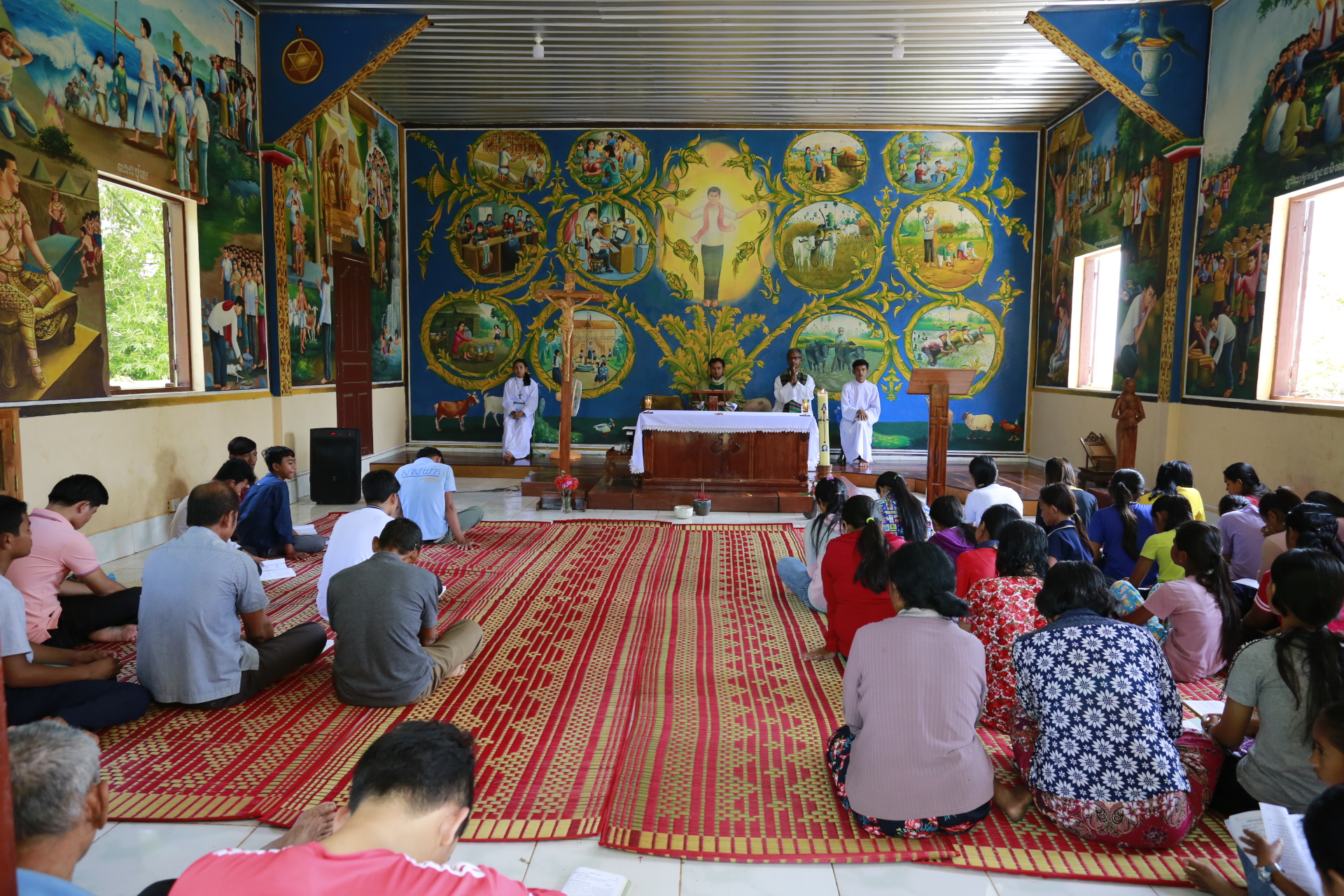“A very small group.” These are the words used by Italian missionary Father Luca to describe the Catholic Church in Cambodia. He has been working in the country for many years and was given the opportunity to speak in one of the reports that were filmed for the pontifical foundation ACN. According to the missionary, “Catholics make up only 0.15% of the population in Cambodia, a country in which Buddhism is the state religion of 90% of its people.”
The Catholic Church in Cambodia has come a very long way. During the Pol Pot regime (1975-1979), all religious and traditional cultural customs were suppressed, including both Buddhist and Christian religious observances. Nearly all churches were destroyed during this time, and a large number of priests and religious died. As presented in the reports, the Catholic community was among the hardest hit: 50% of its members died.
Cambodia officially recognised the presence of Christians in the country on 7 April 1990. Seven days later, now thirty years ago, divine services were publicly celebrated – a first in this country in over fifteen years. The services that were held were the celebration of Easter vigil, and this date will be remembered as a sign of the rebirth of the Church in Cambodia. At the time, 3000 Catholics were living in the country.
One of them was an older woman who had been the only Catholic in her village of Prek-Toal for fifteen years. “There were no priests, there was no Christian community to support her. However, at Christmas she gathered her neighbours together to celebrate the birth of Jesus with her,” explained missionary Father Totet Banaynaz. Since then, a mobile floating church has been built. Fifty baptized people live in the village and each year, a growing number of children and adults are preparing themselves for baptism and Holy Communion.
For thirty years, the Catholic Church, which counts slightly over 20,000 members in majority Buddhist Cambodia, has been working to promote the faith, remaining true to the doctrine of the Church, while at the same time making the parables of Christ understandable for the local village population.
Today, it will not be possible to renovate the church without help from outside. Therefore, the priest invites all “who would like to become active as missionaries with us” to get involved in the project. He added, “We have something that we can give to them: the example of our lives, our simplicity and our suffering. I always say to the faithful here: no one is so poor that he is unable to give. And no one is so rich that he is unable to receive.”






